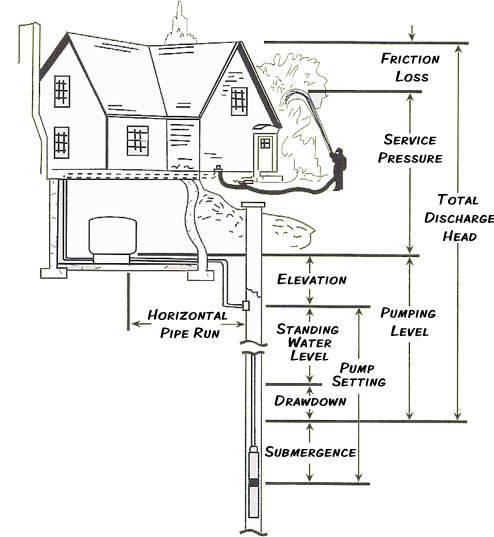
Priest Electric offers complete pump equipment repair, parts, and service in Boise, all of Idaho, Oregon, and Nevada. Contact us today if you need help or answers in selecting the right pump for your application.
The answer to these basic questions will help select the proper pump.
WHAT IS THE SIZE OF THE WELL?
The inside diameter of the well must be known so that the proper size pump, injector, cylinder or drop pipe and foot valve can be determined.
WHAT IS THE PUMPING LEVEL?
The vertical distance in feet from the pump to the water level while the pump is operating. If the pump is installed away from the well and is on higher ground, this elevation must also be
included. Most wells draw down while being pumped so this must not be confused with the standing water level.
WHAT SHOULD BE THE AVERAGE DISCHARGE PRESSURE?
Usual average discharge pressure is 40 lbs, halfway between the 30 lbs. to 50 lbs. switch setting of most water systems. When the tank is installed away from
the pump at a higher level, or when house or yard fixtures are above the pump and tank, a greater pressure is needed and a larger pump must be used.
WHAT CAPACITY IS REQUIRED?
The discharge capacity of the pump in gallons per hour that is needed for satisfactory service. The pump should have enough capacity so that it
can deliver the total water requirement in 2 hours of continuous operation. See table of water requirements below.
AVERAGE WATER REQUIREMENTS FOR GENERAL SERVICE AROUND THE HOME AND FARM
Each person per day, for all purposes = 50 gal.
Each horse, dry cow or beef animal = 12 gal.
Each milking cow = 35 gal.
Each hog per day = 4 gal.
Each sheep per day = 2 gal.
Each 100 chickens per day = 4 gal.
AVERAGE AMOUNT OF WATER REQUIRED BY VARIOUS HOME AND YARD FIXTURES
Drinking fountain, continuously flowing = 50 to 100 gal. per day
Each shower bath = Up to 60 gal.
To fill bathtub = 30 gal.
To flush toilet = 6 gal.
To fill lavatory = 2 gal.
To sprinkle 1/4″ of water on each 1000 square feet of lawn = 160 gal.
Dishwashing machine, per load = 3 gal.
Automatic washer, per load = Up to 50 gal.
Regeneration of domestic water softener = 50-100 gal.
AVERAGE FLOW RATE REQUIREMENTS BY VARIOUS FIXTURES
(gpm equals gal. per minute, gph equals gal. per hour)
Shower = 4 to 6 gpm
Bathtub = 4 to 8 gpm
Toilet = 4 to 5 gpm
Lavatory = 1 to 3 gpm
Kitchen sink = 2 to 3 gpm
1/2″ hose and nozzle = 200 gph
3/4″ hose and nozzle = 300 gph
Lawn sprinkler = 120 gph
Standing or Static Water Level – distance from top of well to natural water level when pump is not operating.
Drawdown Distance – distance water level drops while pump is operating.
Drawdown Level – standing water level plus draw-down.
Submergence – distance submersible pump intake screen is installed below drawdown level.
Elevation – vertical distance between top of well and service inlet.
Pump Setting – distance from top of well to pump inlet screen.
Pumping Level – distance from drawdown level to service inlet.
Service Pressure – pressure (in PSI) at service inlet.
Friction Loss – loss of pressure due to friction of water flowing through pipe and fittings.
Total Discharge Head – discharge head (in feet) delivered when pump is operating at desired capacity.
Horizontal Pipe Run – horizontal distance between service inlet and well.
NOTE: PSI can be converted to equivalent feet of head by multiplying by 2.31.
The pump experts at Priest Electric can help you choose the righting pumping equipment for any project, contact them today for a free quote!
![]()
